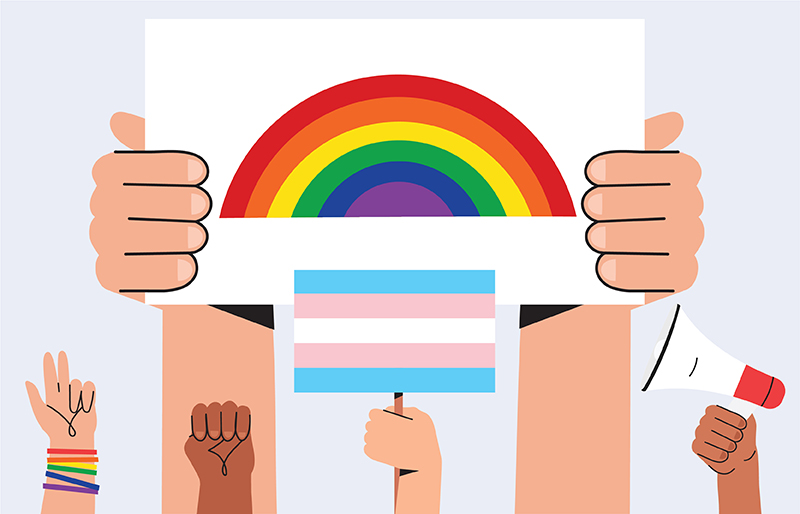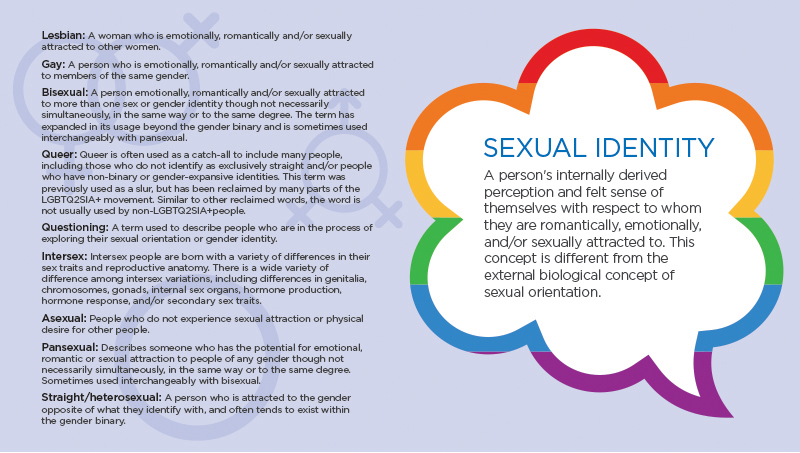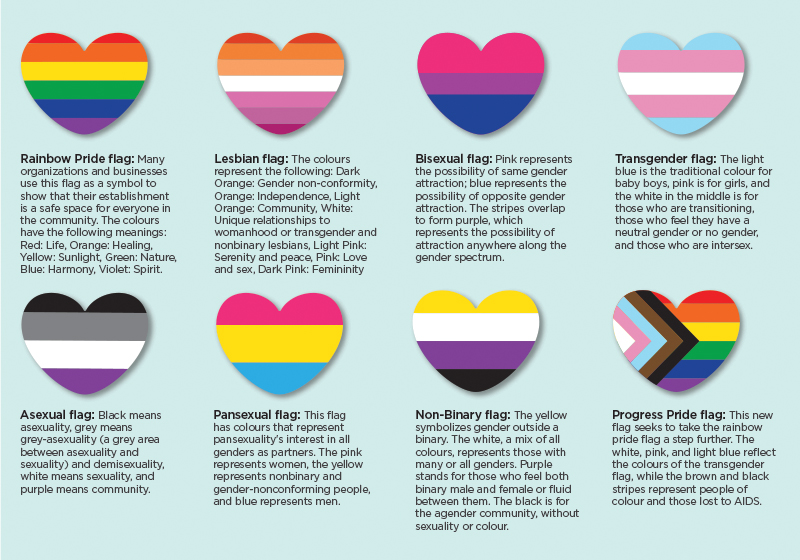
Learn about Pride: Language, identities, and expression
LGBTQ2SIA+
This acronym, and its many variations, are constantly being updated as our awareness of diversity and inclusion evolves. It refers to all identities that are outside of heterosexual and cisgender. This iteration stands for Lesbian, Gay, Bisexual, Transgender, Queer, 2-Spirit, Intersex, Asexual and more.
Have you ever felt unsure about some of the vocabulary people use to describe gender identity and sexual orientation? Below are a few quick references and sources if you’d like to read more on the topic.
GENDER IDENTITY
Gender is one’s innermost concept of self. It includes how individuals perceive themselves and how they refer to or describe themselves (masculine, feminine, non-binary, etc.). Someone’s gender identity may or may not align with their sex assigned at birth. Note: A person’s gender identity is independent from and does not imply their sexual identity or orientation.

SEXUAL ORIENTATION
An inherent or immutable and enduring emotional, romantic or sexual attraction to other people.

ADDITIONAL TERMS
Intersectionality: The complex, cumulative manner in which the effects of different forms of discrimination combine, overlap or intersect. This term, originally popularized to describe the experience of black women in North America, has been appropriated to describe to the ways that discrimination based on gender, sex, race, class, sexuality and ability overlap and intersect with one another.
Ally: Someone who is actively supportive of LGBTQ2SIA+ people, regardless of their own identity or sexual orientation.
Coming out: The process in which a person, on an ongoing basis, acknowledges, accepts and appreciates their sexual orientation or gender identity and begins to share that with others. Coming out is a unique process for every LGBTQ2SIA+ person.
Outing: Exposing someone’s lesbian, gay, bisexual, transgender or gender non-binary identity to others without their permission. Outing someone can have serious repercussions on employment, economic stability, personal safety or religious or family situations.
Transition: A series of processes that some transgender people may undergo in order to live more fully as their true gender. This typically includes social transition, such as changing name and pronouns, medical transition, which may include hormone therapy or gender affirming surgeries, and legal transition, which may include changing legal name and sex on government identity documents. Transgender people may choose to undergo some, all or none of these processes.
Pride: A celebration of standing in one’s own identity against oppression. Pride Month is a celebration of how far we have come, a remembrance of where we came from, and a reminder of how far we have yet to go.
Gender-neutral: The removal of gendered language, ideas, and social institutions where gendered systems result in discrimination and non-inclusion.
FLAGS
No matter where or how you celebrate Pride, you'll be seeing all sorts of flags — and not just the traditional rainbow. Here are other flags that represent some of the many sexualities and identities that fall along the queer spectrum.
